- Home
- Mack Maloney
The Circle War w-2
The Circle War w-2 Read online
The Circle War
( Wingman - 2 )
Mack Maloney
America's Last Stand
In a darkened corner of the world, America lies bleeding. Decimated during the Big War, its vast countryside and once-great industrial cities have been reduced to a war-blackened landscape of chaos and violence. What was once the heartland of America is now the Bad Lands, a wasteland of ash and rubble. But out of these ruins emerges brilliant ace fighter pilot Hawk Hunter, a lone warrior battling to keep the spirit of his country alive…
Wingman
From his secret base in the coastal wilderness of the Pacific Northwest, Hunter hears rumors of a vast army equipped with Russian SAMs hidden deep in the Bad Lands. The reports can mean only one thing — the ultimate showdown with the Russian enemy. With the fate of a shattered nation hanging in the balance, it's up to Hawk Hunter to rally his country's freedom fighters and strike one final bloody blow for a cause known as America!
Mack Maloney
The Circle War
Chapter One
The sky was on fire…
Brilliant reds, yellows, golds, blues, and greens streaked across the horizon.
Waves of color darting in and out, appearing and disappearing like phantoms in the crystal-clear night. The ghostly lights reflected on the ice and tundra below, doubling their intensity. Flying eight miles high and heading due north, Major Hawk Hunter relaxed for a moment to appreciate the mysterious beauty of the Aurora Borealis.
The cockpit of the U-2 was cramped — odd for an airplane designed to stay aloft for 10 or more hours with a single pilot at the controls. Compared to this, the cockpit in Hunter's F-16 was as big as a living room. But creature comforts and sightseeing were the furthest things from his mind right now. He was only reaching the midway point of his long recon mission. He still had a long way to go.
The U-2 was a spy plane. Long and pencil-shaped, it sported a pair of gooney-bird sized wings — the better to fly high and farther with. Normally the airplane was unarmed. But these weren't normal times. Hunter had jerry-rigged two Sidewinder missiles under the jet's wings in case of the unlikely possibility that he'd meet up with an unfriendly airplane somewhere over the frozen wasteland. He had also installed two 20mm cannon in the ship's nose, though at this high latitude and height, the muzzles tended to freeze up unless he test-fired them occasionally.
A sophisticated camera of his own design peeked out from the bottom of the airplane. It was a combination heat sensitive/infra-red video set up, complete with a small TV screen in the cockpit. Should he see anything strange or threatening on the ground, with the push of a button, its shape and "heat signature" would be captured on special videotape instantly even if the ground was obscured by smoke or snow or darkness. The spy plane was also jammed with eavesdropping equipment, designed to pick up the faintest radio or TV transmission for 50 miles around. But right now, all was quiet across the miles of cold, bleak, barren, uninhabited arctic landscape.
That was fine with him…
This was the 50th — or was it the 51st? — arctic recon flight he'd made in the past six months. His course never varied. Taking off from his base in southwest Oregon, he would climb to 40,000 feet over what used to be the state of Washington. Then he would skirt part of Free Canada, then straight up — over the Wrangell Mountains, over the abandoned city of Fairbanks, across the Arctic Circle through to the top of Alaska.
His mission was simple. He was looking for Russians.
Off Point Barrow, Alaska, a pre-set indicator light blinked on; it was his signal to enter a course correction into the flight computer. Then he put the U-2 into a long arching sweep to the west. Within an hour, he would be over the coast of Soviet Siberia.
It was a lonely but necessary vigilance. He knew any sign of Soviet ships, aircraft or even arctic ground troops could be the advance units of a large invasion force. And if the Russians were coming, they'd be coming through this arctic backdoor. And only Hunter had eyes in this part of the world. He was the sentinel. But so far, in his 50 previous flights, he hadn't spotted a thing.
Hunter had come to both love and dread the long recon flights. He loved them simply because he was flying. The utter starkness of the arctic landscape below fascinated him. But each long journey alone also gave him time to think — too much time. The long hours were a blessing and a curse.
He thought about his country…
The United States were victors in World War Ill's battles against the Soviets, but losers in the deception that followed the ceasefire. All it took was a traitorous vice president, who arranged the assassination of the president and his cabinet, then let the Star Wars shield down long enough for a flood of Russian missiles to come over the North Pole and obliterate America's ICBM force while it was still in the ground. The vice president — who was later revealed as a Soviet mole — then "negotiated" the peace. The result? Now there was no more United States. It was broken up, decentralized and, in the years since, frequently at war with itself.
This was America under "The New Order."
The devastated middle of the continent — the location of the destroyed-in-place U.S. ICBM force — was now a nightmare of neutron radiation, poison gas and a swirl of strange hallucinogenics-that were spread everywhere when the Russian missiles hit. This was The Badlands, the schism that stretched from the Dakotas to the northern border of the new Republic of Texas.
These events gnawed at Hunter — he was obsessed with hate for those who had had a hand in the destruction of the country he loved. The Russians. The vice president. The turncoat National Guard troops who carried out the New Order to the letter while the regular U.S. forces were overseas fighting real battles.
He hated the air pirates — renegades who now roamed the skies, preying on innocents and attacking the huge air convoys that were the only contact between the relatively civilized portions east of the Mississippi and the West Coast. Ditto the Mid-Aks — the corrupt, fanatical leaders of the Middle Atlantic Conference which grew out of the Mid-Atlantic states. Then there was The Family, the super-criminals who had operated out of New Chicago. Their armies had attacked Football City — formerly St. Louis. But the free-wheeling, independent gambling territory refused to knuckle under to the threats of blackmail and extortion from their unfriendly neighbors to the north. It was Hunter and the air force of rescued pilots he organized, who helped Football City's army and thousands of Free Forces' volunteers defeat The Family's 80,000-strong invading force in a series of spectacular battles.
Both the 'Aks and The Family relied on Soviet help — Hunter was certain of it.
Defeated on the European battlefields and elsewhere, the Russians had a great interest in keeping America fractionalized and unstable. Hunter was a stumbling block in these devious plans. His goal was to reunite the continent — reestablish the democracy that was once the United States. If this dream was to come true, the destabilizing elements in New Order America — and there were plenty of them — would have to be defeated.
After the big war, Hunter had joined a bunch or his ex-Air Force buddies in a group known far and wide as "ZAP." The Zone Air Patrol was the crack air force for the Northeast Economic Zone, the area once known as New England that had become its own country after the New Order went down. But as good as ZAP was, they couldn't prevent the Northeast Economic Zone from falling to the Mid-Aks.
That's when Hunter became a fighter pilot for hire, only later did he get revenge by defeating both the 'Aks and The Family.
Now he was part of the newly-formed Pacific American Air Corps, or PAAC. He and a number of other ex-Air Force and ZAP pilots had established a new air base near Coos Bay, Oregon. They were allied with the Republic of California, a democratic govern
ment sometimes known as The Coasters. Together, their charge was to protect the western flank of the continent as far east to the Rockies and up through Alaska. It was a huge responsibility, but they were relatively well-equipped for the job — especially in air power. They had to be. Because once the Soviets recovered from their wartime losses, Hunter and many other freedom-loving people were certain they, or possibly some puppet army, would invade America for real to complete the job they failed to do in Europe.
And that's why he flew these long missions…
His country, its enemies, his past — all these things haunted him during the long, solitary flights. But there was another memory — more personal, that deep down inside him also refused to let go.
Her name was Dominique…
Hours passed. The night got darker. He was over the tip of Siberia when he switched on the plane's eavesdropping equipment. Just like 50 times before — he heard nothing, saw nothing. He stayed on a southerly course for a while, soaring over the Chukchi Peninsula. Then he turned back to the east. The sun was coming up. Soon he was over northern Alaska once again, heading for home.
Suddenly, it happened. The feeling. His sixth sense that told him that trouble — usually trouble on wings — was nearby. He hadn't felt it this intensely in a long time. Now, his body was ringing with it.
He checked his instruments. He was over Seward's Peninsula, about 100 miles north of Nome, Alaska. Below him were banks of frozen clouds. He knew an arctic storm was brewing, but the inhospitable conditions made no difference — something was down there. He put the U-2 into a dive to get a closer look.
The airplane bumped and bucked as he passed through the turbulent cloud cover.
Snow started to swirl around him and accumulate on his cockpit windshield as he lowered his air speed. Suddenly a trio of flat panel warning lights buzzed and flashed in succession on his control board. His heat-sensitive infra-red camera sensors were confirming his sixth sense. They had detected telltale signs of heat — a lot of it — somewhere on the ground below.
Another pilot might have just set the cameras rolling and passed over the area at a safe height, waiting until he got back to base to check the "heat" film and see what it revealed. Not Hunter. He instructed the flight computer to take the craft to the source of the heat.
The U-2 was being buffeted by very high winds and the snow made visibility close to zero. Once he got to a reasonably low altitude, Hunter switched on his ground radar and waited for an image to appear on the screen. Slowly, the hazy forms of the ground contours materialized. He was about a half mile above a valley that was surrounded by mountains on three sides. The sensors indicated the heat source was located at the southern end of the valley.
He finally broke through the cloud cover only to find he was still flying blind. A blizzard was raging through the valley, and it was all he could do to keep the aircraft level. He slowed his airspeed down to almost a crawl. His visibility was now absolutely zero. He was flying on instruments and instincts.
He switched on his TV "heat screen," the read-out from his special video camera. At the end of the white fuzzy patterns of the valley walls, he could see a large red form indicating heat. What the hell could possibly be giving it off? There certainly couldn't be any people or settlements surviving in this frigid wilderness.
Unless…
It was now straight ahead of him. He brought the plane down even lower — to 500 feet. The mysterious source of heat would soon be just below him. He dropped to 200 feet — near suicidal for a pilot of lesser caliber in the blizzard winds — but fairly routine for him.
"5… 4… 3… 2… 1… Now!"
He flipped on the infra-red/heat sensitive camera and watched as the image below him materialized on the cockpit TV screen. He knew that whatever it was, the camera would also record it on the airplane's internal videotaping system.
Slowly the image took form…
"Jesus Christ!" he yelled. He couldn't believe it. The images were fuzzy and unfocused, but unmistakable. Up ahead — lined up in two neat rows — were no less than 50 jet fighters! Their engines were on, to keep them from freezing, creating ghostly auras around each one. Even though he was at 200 feet, he sank even lower, dispatching his landing gear to get his speed down to a crawl. All the time the special camera whirred.
As he drew closer, he saw the images of more than just jets. There were also heat outlines of buildings — igloo-type affairs scattered about near the fighters, plus a radar dish and antenna. He could even see a few human forms moving in the blizzard around the jets.
Even though his camera was picking up everything, he had to try and get a visual sighting on one of the airplanes. He had to find out who owned these airplanes. Still being banged around by the blizzard winds, he dropped down even lower, and tipped the jet to its port side. Through a freakish break on the gale-force snowstorm, he was able to catch a split second glimpse of one of the jets. Then, in an instant, the "hole" in the storm was gone and he was flying blind once again.
Suddenly a buzzer sounded in the U-2's cockpit. Two bright red lights started to blink on the flat panel control board. He didn't have to look at the controls to know what all the commotion was about. Someone down below with their finger on the launch button of a SAM had acquired a radar lock on him.
Within seconds the buzzing noise switched to a continuous alarm sound. The light stopped flashing and stayed on, burning even brighter red. The missile had been launched and was zeroing in on him.
No matter. He had enough in the camera anyway; it was time to leave. All in one motion he flicked the landing gear up, pointing the U-2's nose skyward and booted in the airplane's afterburner. The airplane seemed to hang suspended in the air for a moment. Then a great burst of energetic fire shot out of the rear. In a split second, the U-2 was gone. The missile tried to keep up but it was too much. It ran out of fuel and crashed into a snow-covered mountain four miles away.
Hunter headed south, his throttle open on "full military" power the whole way.
The missile fired at him confirmed it; those were not "friendlies" down there.
He had to get back to his base, organize an air strike and return as quickly as possible.
What he had just barely seen was unbelievable but unmistakable. He was soon 20, 30, 40 miles away, but the image was still burned onto his retinas and in his brain. He had only seen the jet for a split-second, not nearly long enough for him to ID its type. But emblazoned on the side of that one jet was an emblem. A red star with a yellow border. The insignia of the Soviet Union. The Pacific American Air Corps had a bunch of Russian jet fighters right in their backyard.
But not for long…
Chapter Two
One hour and 20 minutes later, Hunter was leading a strike force comprised of eight PAAC aircraft back to the site of the Soviet base.
He had had no time to explain; no time to review the infra-red tape in the U-2's cameras. He had kept strict radio silence all the way back to the base, but once he landed, he virtually leaped out of the U-2 and into his F-16. He called to the two "scramble" jets — aircraft that were always armed and warmed up and ready to go at a moment's notice — to get airborne, while at the same time, sounding a red alert at the base.
Within minutes, five more airplanes were gassed, armed and taxiing for take-off. Hunter allowed himself a tinge of pride at the speed and professionalism of it all, though it wasn't all that surprising. The majority of PAAC pilots were, like him, veterans of the old ZAP…
The strike force was made up of a potpourt of aircraft. The two scramble jets were A-7 "Strikefighters" bulging at the wings with napalm cannisters. There were also three T-38s, converted training jets that he knew were carrying four 1000 pound bombs each. Two A-10 "Thunderbolts" were also along for the ride.
They too were carrying napalm, and each plane had two Vulcan cannons in its snout. Hunter's famous souped-up F-16 — the highest performance jet — was carrying its standard "six-pack" of Vulcan cannons, plu
s a ordnance dispenser attached to its belly. This device would drop up to 800 "bomblets" on the base — small hand-sized explosive charges that were well suited to destroying parked aircraft and landing zones.
Hunter swung his F-16 in and out of the formation, checking with each airplane's pilot that their craft were ready for action. He then checked his own instruments. He was within 10 miles of the location of the base. The snow was still falling but it had let up slightly. He knew that whoever was at the base would probably be expecting some kind of an attack, especially after they had taken a shot at the U-2. He had to be prepared to see a few of the Soviet jets airborne, flying protection over the base, that is, if they were able to take off in this weather. Luckily both his F-16 and the A-7 Strikefighters were carrying Sidewinder air-to-air missiles.
He slowly brought the formation down low — they would come in right above the deck. He and the A-7s would go in first, lay down their bombs and then climb up to 2000 feet and serve as the air cover while the T-38s and the A-10s did their work. If no Russian jets were there to challenge them, each plane would return and strafe targets of opportunity.
He recognized the mountain just ahead of him as the one that formed the southern edge of the valley's border. Just beyond it was where he had spotted the Russian planes. He checked his instruments a final time, and increased his throttle slightly. The F-16 responded and pulled a little ahead of the A-7s. The trio of T-38s were slightly behind and the A-10s brought up the rear. Hunter would be the first over the target — if any SAMs were coming up, they'd be aimed at him. He gave a thumbs-up signal over his head for the A-7 pilots to see. Then he bore down over the mountain and prepared to unleash his bombs on the Russian base…
But there was nothing there.
He streaked down the mountain valley only to find that where he had seen the Soviet jets less than two hours before was now nothing more than a snowswept landscape. The jets, the huts, the antenna, the radar — everything was gone. He quickly re-checked his coordinates; he knew this was the place. But where the hell were the Russians?

 Strike Force Bravo s-2
Strike Force Bravo s-2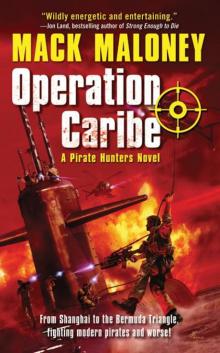 Operation Caribe ph-2
Operation Caribe ph-2 Beyond Area 51
Beyond Area 51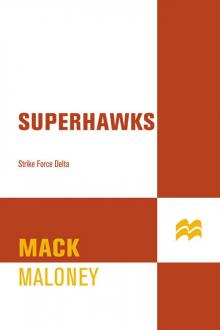 Strike Force Delta
Strike Force Delta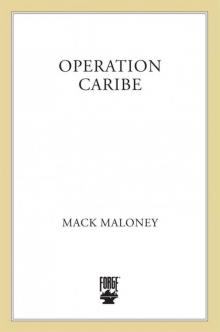 B00447820A EBOK
B00447820A EBOK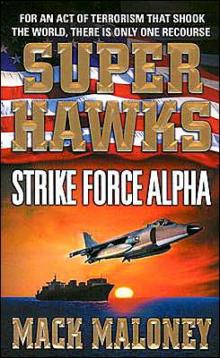 Strike Force Alpha
Strike Force Alpha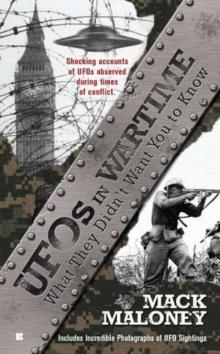 UFOs in Wartime: What They Didn't Want You To Know
UFOs in Wartime: What They Didn't Want You To Know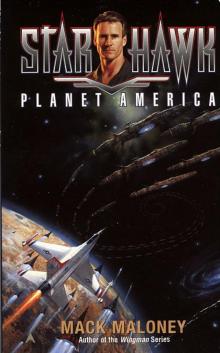 Planet America s-2
Planet America s-2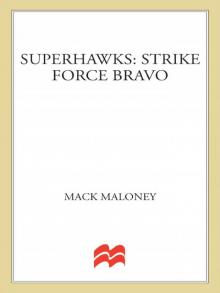 Strike Force Bravo
Strike Force Bravo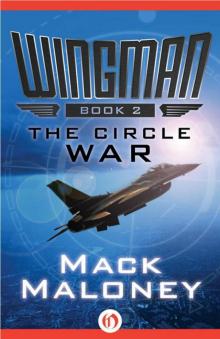 The Circle War w-2
The Circle War w-2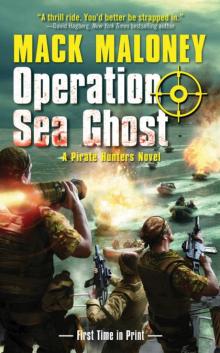 Operation Sea Ghost ph-3
Operation Sea Ghost ph-3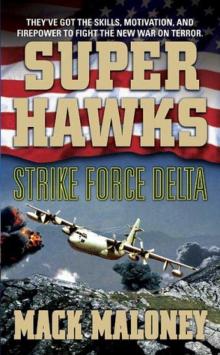 Strike Force Delta s-4
Strike Force Delta s-4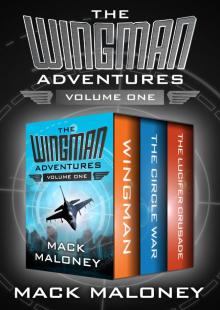 The Wingman Adventures Volume One
The Wingman Adventures Volume One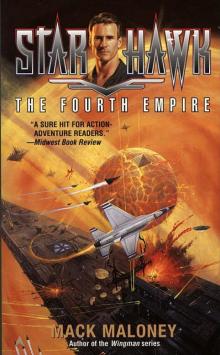 The Fourth Empire s-3
The Fourth Empire s-3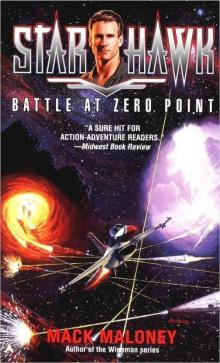 Battle at Zero Point s-4
Battle at Zero Point s-4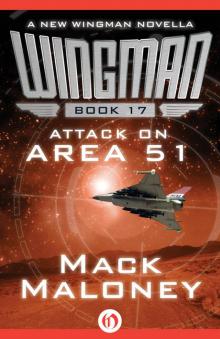 Attack on Area 51
Attack on Area 51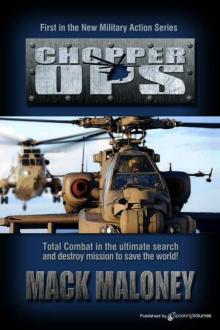 Chopper Ops
Chopper Ops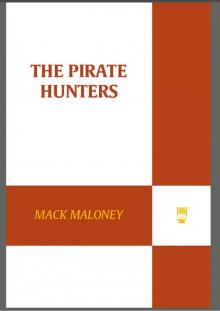 B003IKHEWG EBOK
B003IKHEWG EBOK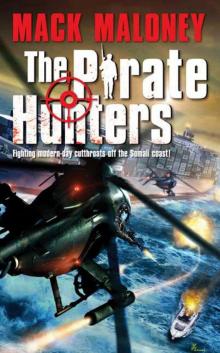 The Pirate Hunters ph-1
The Pirate Hunters ph-1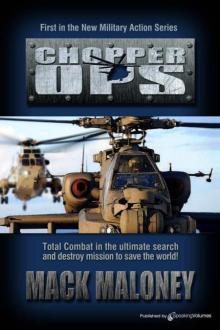 Chopper Ops co-1
Chopper Ops co-1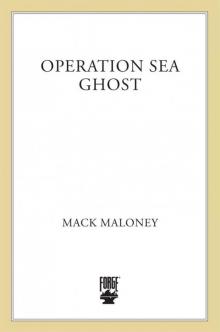 B005J4EW5G EBOK
B005J4EW5G EBOK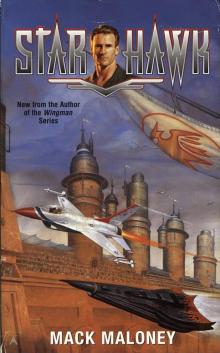 Starhawk s-1
Starhawk s-1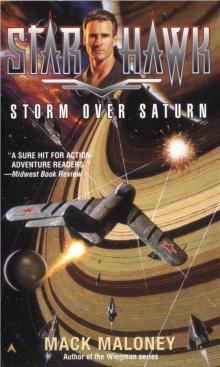 Storm Over Saturn s-5
Storm Over Saturn s-5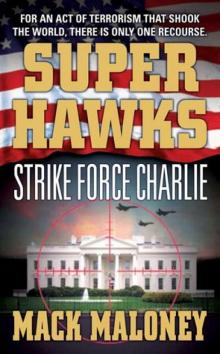 Strike Force Charlie s-3
Strike Force Charlie s-3